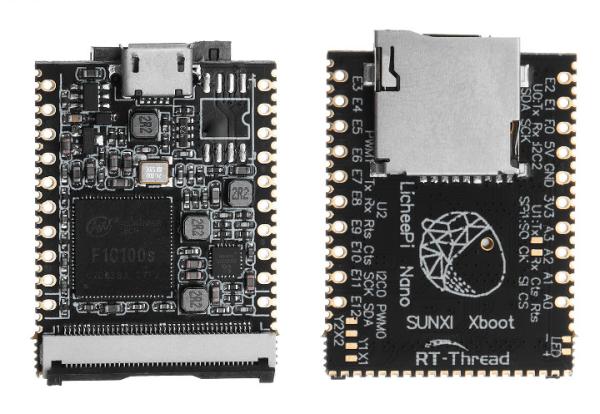The diffusion of the A10 Cortex A8 processor did not stop the ARM9 market of the Allwinner F series. Since its foundation, Allwinner has released several SoCs for use in Android tablets, as well as in smartphones and camera systems. The A10 was the most successful Soc of Allwinner. The chip was mainly used on Android and Linux keys, even with tablets under $ 150 such as Ainol Novo 7 Aurora (India). The processor supports a maximum resolution of 1920×1080 pixels, although it has often been used in tablets with resolutions of 1024×600 or 1280×800 pixels.
The F series finds application especially in multimedia systems for vehicles and various audio solutions. LicheePi Nano is a small Single Board Computer (SBC) which marries the configuration of the F1C100, in a form factor of the size of an SD card. It provides a full support[MP1] for LED and RGB displays. The F1C100 processor is based on the ARM9 CPU architecture with a high level of functional integration. F1C100 supports Full HD video playback, including H.264, H.263, MPEG1 / 2/4 decoders. The integrated audio codec and I2S / PCM interface enable the user for an excellent audio experience. The TV-IN and TV-OUT interfaces allow the use of video devices such as the camera and the TV.
The SoC implements two timers to provide the operating system’s scheduler interrupt. There are three type of DMA, each can support 8-bit/16-bit/32-bitdata width. Moreover, The DRAM Controller (DRAMC) provides an interface to support up to a 1G bits memory address space.
The specifications of the LicheePi Nano board are summarized in the following points:
- SoC- Allwinner F1C100s ARM926EJS processor clocked at up to 900MHz
- System Memory – 32MB DDR integrated into SoC
- Storage – Micro SD card, and optional 8M SPI flash (unpopulated in the photo above)
- Display I/F – 40-pin RGB LCD FPC connector supporting 272×480, 480×800, 1024×600 and other resolutions resistive and capacitive displays
- Video Decoding – H.264 / MPEG up to 720p
- I/Os via 2.54mm pitch through holes and 1.27mmm pitch castellated holes
- SDIO for WiFi module
- 2x SPI, 3x TWI (I2C),3x UART
- 1x TV out, 2x TV in
- 2x PWM
- 1x LRADC
- 2x speaker output, 1x mic input
- USB – 1x micro USB OTG port
- Power Supply
- Input 5V via micro USB port, 3.3 to 5V via pin
- Output – 3.3V, selectable input RTC voltage
- Power Consumption – 54mA (idle) with Linux, 250mA with display
- Temperature Range – Storage: -40~125°C; operating: -20 to 70°C
Read More:


